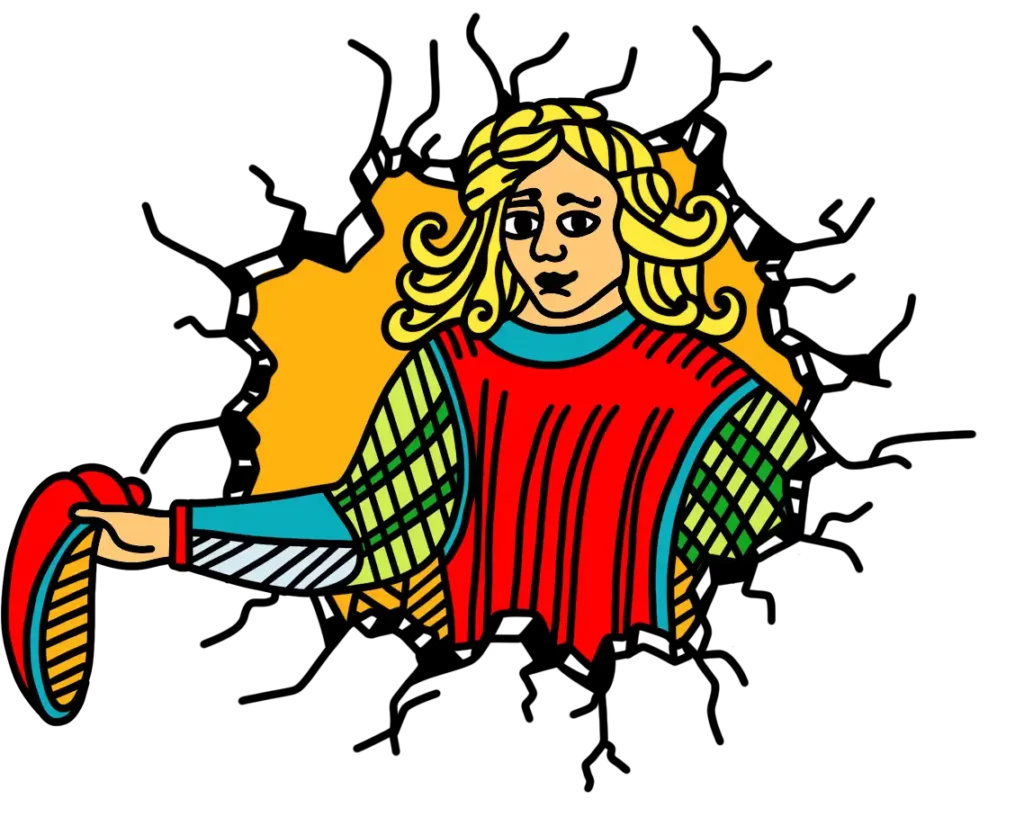
“Without light, I am dead.”

Traditionally in the Marseille tarot, the “game” or the “I” of the Marseille oracle ends with the “unnamed arcana”, sometimes called “death”. Death is characterized mainly by the end of life. On this arcana, we see the remains of bones which are present, as well as a man on his knees observing in deep reflection, imbued with melancholy, the remains of this unknown person. Was it unknown to him? Was it someone close to you? The bones lying under this immortal tree which does not lose its foliage are symbolic. If the man is dead, life continues, taking with it the memories of the past. Death is considered sad because it often represents the end of something or someone, which can be difficult for remaining human beings to accept. Indeed, the death of a loved one can cause a deep feeling of sadness and pain in those who remain. However, death can also be seen as a natural passage of life. life. According to some beliefs, it represents the beginning of a new journey or a new existence after physical death. In this context, death can be seen as a transition rather than a definitive end. In the Marseille Tarot, the Nameless Arcana should not be interpreted solely as the end of something,but rather as a symbol of transformation and renewal. The Marseille Oracle shares this vision.
The foreground scene reveals 2 characters, the kneeling man and the bones of a deceased person. In the second shot, we see a skeleton with a trumpet and dressed in flesh-colored clothing. He is the second musician in the game who also holds a wind instrument. The skeleton plays a macabre song, also known as the danse macabre. It is a medieval artistic representation that depicts death in the form of a skeleton or a dark person , dancing or playing music. The macabre song aims to recall the brevity and fragility of human life, as well as the equality of all human beings in the face of death. Death is represented as an inevitable reality , which awaits everyone, regardless of their social position, wealth or reputation. Although the depiction of death may seem frightening or morbid, the macabre song actually had a moralizing purpose, reminding people of the importance of living each day to the fullest, leading a virtuous life and preparing for death.It is celebrated in many countries in different forms as “santa muerte” in Mexico, “halloween” in Anglo-Saxon countries or even more soberly here with All Saints’ Day which is more of a celebration of contemplation. In the macabre song, each character is associated with death in one way or another, often through poetic verses or dialogue. The representation of the different characters varies according to the artists and the periods, but the themes addressed are generally the same:death is inevitable and strikes without distinction.
In the Marseille tarot, it is often associated with the reaper. This vision was taken up in the cinema in the film “scream” or even “final destination”, where death takes on its aspects. The hour of death has come with this last arcana which closes the “I”. Will there be a succession, a transition? Recovery after death can be understood in a more philosophical context. From this perspective, death can be seen asa transition to a new state of being, where one is freed from the constraints of physical life and can achieve a higher form of existence, a new breath, the spirit is reborn. The loop would then be closed, we would return to the beginning of the oracle of Marseille with the first arcana of our game, which was also the last, I am of course talking about the arcana of the spirit. We only appear, but the spirit remains. In essence, it is infinite and immortal…
Change
Disturbances
New
Melancholy
Find the evidence
Party
Collection
Immortality
Spirit
Fateful equality
Modesty
Humility
Personal quest
Grief
Construction site
The good moment
Cycle of life
Being hit
Fragility
Health
Hidden truth


